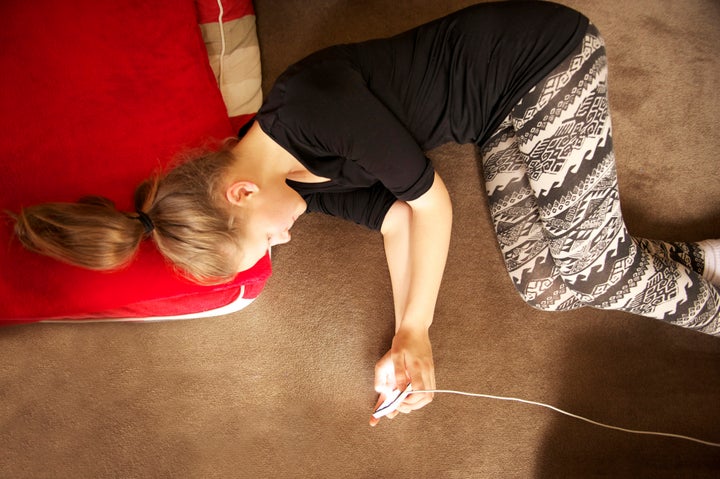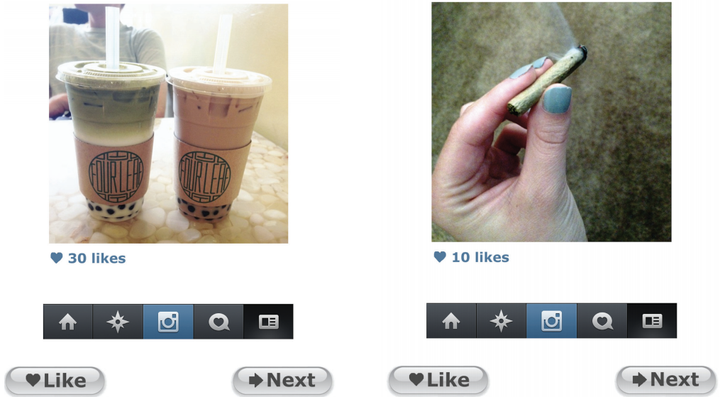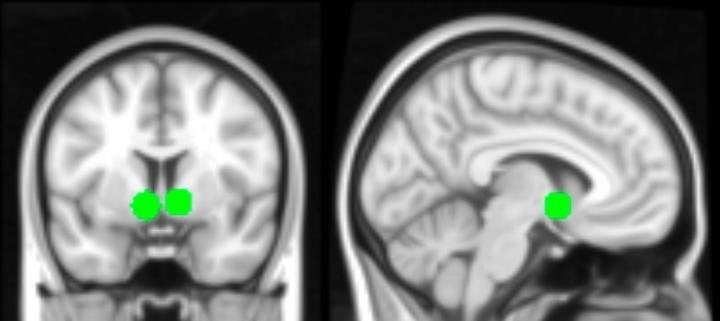
If you have teenagers or know them, you’ll agree they always seem to be glued to their smartphones -- or, more precisely, the social media platforms these phones contain.
But while it’s easy to joke that teens are obsessed with Instagram, Snapchat and probably a bunch of apps we don't even know about, there's new evidence that might explain why: Neuroscientists have found that seeing all those “likes” on a social media post may be especially intoxicating to growing brains.
In the first study to scan teenagers' brains while they use social media, scientists from the University of California, Los Angeles found that a certain part of the brain associated with rewards hums with activity whenever teens see one of their photos earn a lot of “likes.”
The researchers also found that "liking" had a cumulative effect: When peers liked a photo, teens were more likely to like the photo themselves, no matter the content.
Almost 90 percent of American teens say they use at least one social media site, and 71 percent of teens say they use at least two sites. And that can have negative effects: A recent survey found that half of teens feel addicted to their devices. Other research has found that pressure from social media might be linked to an increased risk of depression and anxiety in teens.
While this current brain scan study didn't delve into these areas, it does offer clues as to why social media is so irresistible to the teen brain -- perhaps even in the face of negative feelings.
"It may be that one of the reasons that teens are such active users on social media is that they’re really sensitive to these likes,” said Lauren Sherman, lead author of the brain scan study and a researcher at the UCLA Brain Mapping Center in a phone call with HuffPost. Secondly, she said, they’re "really sensitive to what their peers are doing online."
Instagram 'lights up' the brains reward system
Sherman and team recruited 32 teenagers, aged 13 to 18, to take part in a small, photo-based social network similar to Instagram. They asked the teens to submit 40 photos from their own personal Instagram accounts to be part of the feed, and then showed them a total of 148 photos from these submissions on a computer screen.
The researchers told the individual participants that the photo stream had already been reviewed by 50 other teens as part of the study, and these photos had earned “likes” from these other teens. (In reality, the researchers themselves had assigned “likes” to these photos).

As the teens viewed the photos, researchers scanned their brains with an MRI machine and observed that certain images stimulated parts of their brain. For instance, when a participant saw that their own photo had earned a large number of “likes," several centers in the brain associated with social activity and visuals lit up.
One region in particular, called the nucleus accumbens, was especially active. This region is linked to rewards and lights up when a person does pleasurable things like eating chocolate or winning money, the researchers noted. This suggests that the experience of being validated with “likes” is extremely rewarding, the researchers wrote.

Separately, when the researchers asked teens to choose photos to like, they discovered that teens were heavily influenced to like a photo when it already had a large number of likes.
Why this affects teens in particular
Past research on the nucleus accumbens shows that compared to kids or adults, teens have exaggerated activity in this area of the brain when it comes to rewarding activities. The nucleus accumbens also grows to its largest size during adolescence before it starts to shrink, which is why, “nothing -- whether it’s being with your friends, having sex, licking an ice-cream cone, zipping along in a convertible on a warm summer evening, hearing your favorite music -- will ever feel as good as it did when you were a teenager,” psychology professor Laurence Steinberg explained in a 2015 New Yorker article about the teenage brain.
The over-activity and size of the nucleus accumbens can explain everything from teens’ risk-taking behavior to intense pleasure seeking to their tendency to make poorly thought-out decisions. It could also explain why teens feel such a strong connection to the rewards that come from social media, Sherman said.
Of course, teens have been eager for validation from their peers and have been easily influenced by their peers long before social media became such a prominent part of everyone’s lives.
But the one thing that’s different about social media, Sherman explains, is that it provides a quantitative measure of peer approval in terms of the number of likes one can earn in a single post. The “likes” on the photo provide an immediate, tangible reward, which lights up parts of the adolescent brain like the nucleus accumbens that are primed to overreact to every pleasure and happiness, Sherman explained.
“That’s one of the reasons social media is more compelling,” she said. “It helps explain what’s going on and why teens find it so interesting."
Social media influence isn't necessarily a bad thing
These and other findings don't mean that social media access will necessarily harm teens, Sherman explained.
Her study found that teens were influenced by the “liking” activity of their peers no matter what the subject of the photo was -- neutral, positive in nature or "risky" (say, drinking or smoking) -- which means that peer influence could go either way.
If you’re a parent with a teen who is obsessed with social media, that doesn’t necessarily mean they are being negatively influenced, Sherman said. However, parents should realize that their teen’s online social networks are probably more vast than their day-to-day, IRL friendships, and that their teen is probably drawing from a bigger pool of influences than a parent would think.
“Peer influence is kind of agnostic; it can be a good thing, it can be a potentially bad thing,” Sherman said. “Ultimately what really matters is what teens are seeing online, what their peers are posting and liking, and if these are pro-social, positive behaviors.”
For more perspective on how to encourage teens to have a healthy relationship with their devices, check out experts who offer this counterintuitive advice for parents: Rethink time limits, be honest about your own relationship with your smartphone, and get to the root of the issue -- depression, anxiety or bullying --that could be behind problematic social media use.
The study was published in the journal Psychological Science.
